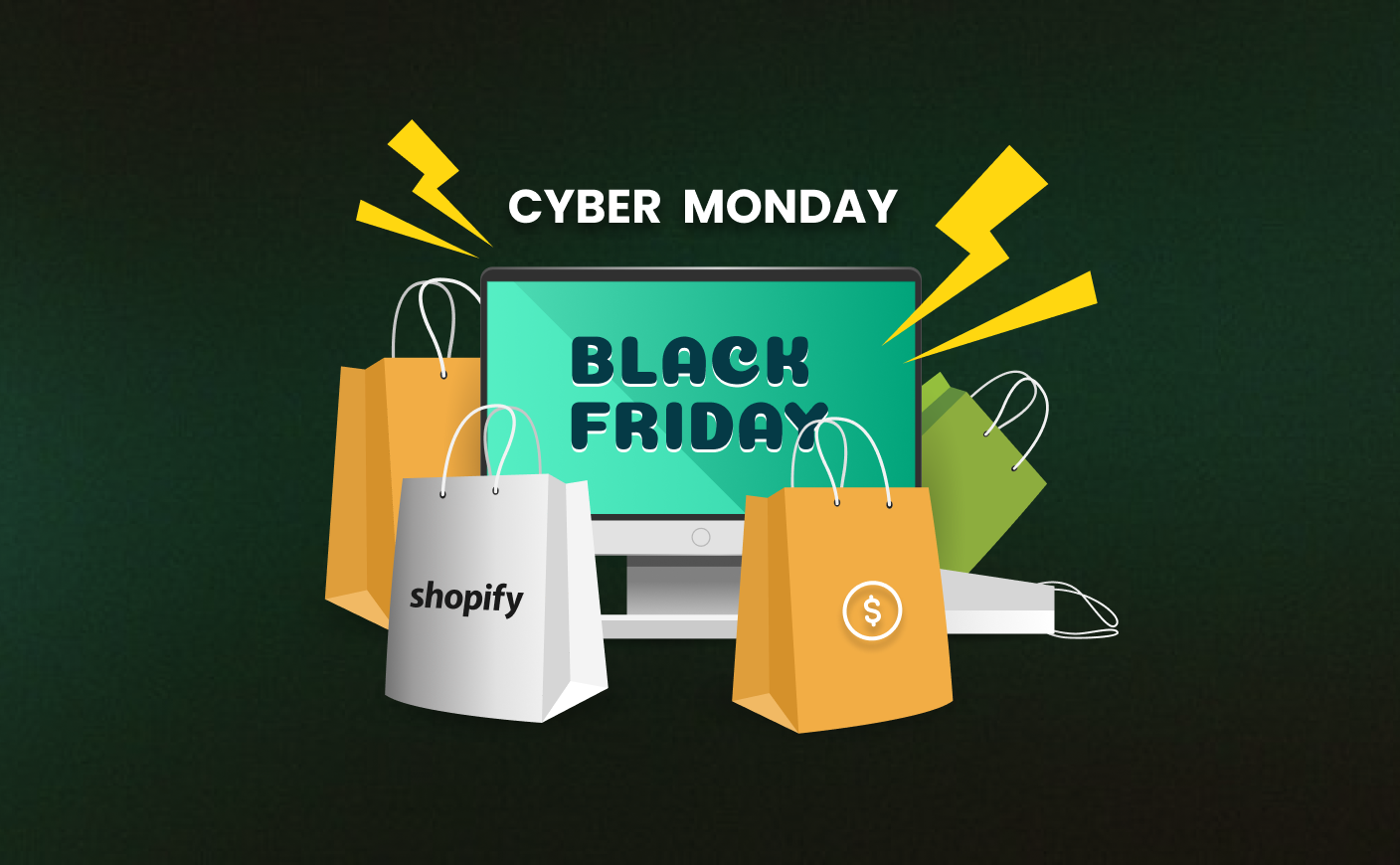This guide will help you navigate the Shopify app store in 2024
shopify
shopify App
Strategy

Shopify, one of the go-to ecommerce platforms for any business owner, whether small or large scale offers a range of apps to integrate in your store.
Since every business has unique needs and have evolved over the years, the Shopify app store gives them the unique opportunity to tailor their preferences over the years.
Shopify app store has such a positive impact on online businesses that as per a recent study, 87% of brands acknowledge they rely on them for running their Shopify stores.
Understanding The Shopify App Store
There are many different apps available in the Shopify App Store that are made to improve and increase the features of Shopify stores.
It offers the following advantages to a Shopify merchant:
- Improve online presence
- Generate leads
- Establish customer loyalty programs
- Tailor websites as per their preferences
- Helps to increase sales
In short, no matter what your business objectives are, there's a Shopify app that can help you achieve them.
These apps help merchants meet their specific company needs in addition to offering customers an effortless shopping experience. This is essential for staying competitive and leveraging the latest tools to stay ahead in the market.
How Many Apps Does Shopify Store Offer?
With over 8,000 apps available in the Shopify App Store, you can personalize your website in a myriad of ways.
This extensive range of choices demonstrates Shopify's dedication to enabling company owners to thrive in the fiercely competitive market of today.
5 Benefits Of Using Shopify App Stores
Shopify Apps offer an easy yet efficient solution for companies at every level of their ecommerce journey. It acts as a powerful tool to improve the functionality, design, and management of your online store.
By using apps from the Shopify App Store, you can expand your store's functionality without having to engage in intricate custom programming, whether you're just getting started or looking to grow.
Here are the key benefits of leveraging Shopify apps:
Better Store Management: Shopify Apps eases out a number of operations, including the development, design, and promotion of stores. It frees up business owners to concentrate on expanding their brands rather than worrying about minute technical concerns.
Vendor Support and Reliability: Vendor apps offer peace of mind and efficient store operations by being easily accessible to address difficulties that may arise.
Enhanced Store Functionality: Shopify apps complement the platform by offering functionality that are not available in the default tools. It thus helps to meet the unique requirements of different products and stores, and frees up store owners to focus on customer interaction and sales.
Wide Range of Options: The App Store includes applications from both Shopify and third-party developers. Thus, it offers a diverse selection of tools for everything from basic SEO tasks to complex customer rewards programs, all compatible with external services like email marketing and analytics.
Public App Availability: Only Shopify Public Apps are listed in the Shopify App Store. Therefore it is scalable, secure, and well-supported solutions to thousands of merchants with access to 24/7 technical support.
How To Integrate Apps To Your Shopify Store?
Integrating apps to your Shopify store is the quickest method to improve your operations and add new features. The app Store offers a vast array of options to pick from, whether your goals are to improve customer experience, optimize processes, or increase marketing efforts.
Here’s a step-by-step guide to help you integrate apps into your store:
1.Log In To Your Shopify Admin
Start by logging into your Shopify admin panel with your store credentials.
2.Visit The Shopify App Store
Navigate to the Shopify App Store by clicking on "Apps" from your dashboard and selecting "Shopify App Store."
3.Search For The Desired App
Use the search bar or browse through categories to find the app that best suits your needs.
4.Review The App Details
Once you find an app, click on it to read through its features, pricing, and user reviews. Ensure it meets your requirements and install the app by clicking on the "Add App" button.
5.Authorize the App
You'll be prompted to approve the app’s permissions. Review the permissions and click "Install App" to authorize its integration into your store.
6.Configure the App Settings
After installation, follow the app's setup guide to configure settings according to your store's needs.
7.Test the App
Test the app to ensure it's working correctly and providing the desired functionality before making it live on your store.
How Do You Pick The Top Shopify Apps For Your Online Store?
Choosing the right app from the Shopify App Store can significantly improve the usability and functionality of your website. With more than 8,000 apps accessible, it's critical to choose wisely based on your needs and purchasing capacity.
Here's a step-by-step guide to help you select the best Shopify apps for your business:
- Evaluate Your Budget and App Pricing
- Set a clear budget for what you can spend on apps that improve your store’s efficiency or add desired features.
- Decide between custom-built apps or public apps available in the App Store.
- Identify the specific tasks the app will perform, like inventory management or marketing.
- Compare different pricing plans and check for additional costs.
- Make sure that the app’s price aligns with its potential value to your business.
Tip: You can read our guide to know the value of your ecommerce business.
- Review App Descriptions and Documentation
- Look for apps with descriptions, screenshots, and explainer videos.
- Explore into the product’s technical documentation to ensure it’s well-structured and easy to follow.
- Check if the documentation provides clear step-by-step guides for smooth app integration and usage.
- Analyze Customer Reviews
- Pay attention to reviews, as 90% of users rely on them before downloading apps.
- Look for feedback on what consumers like, dislike, and any common bugs or issues.
- Focus on low-rated reviews to understand potential challenges and how developers handle them.
- Check developer responses to reviews for insights into their customer support and communication.
- Evaluate the Level of Support
- Review the app’s support policies, including response times and the availability of help sections or FAQs.
- Look for apps that offer trial periods, allowing you to test the product before committing to payment.
- Seek reviews that highlight both positive and negative experiences with the app’s support team.
Top 4 Trending Shopify Apps For Your Online Business in 2024
Let us explore the most popular Shopify apps in the year 2024.
1.Storelab
Developing a mobile app for your business can greatly increase sales, as mobile applications convert three times better than mobile websites and account for 79% of all traffic on Shopify. With the same features as leading companies, StoreLab is an intuitive mobile app builder for Shopify that can let you release a custom app in as little as two weeks.
By enhancing client retention, engagement, and communication, a Shopify mobile app builder such as StoreLab can assist you in increasing mobile sales.
Key Features:
- Abandoned Cart Notifications: Recover lost sales with free automatic push notifications to re-engage customers.
- No-Code App Design: Easily build a high-converting app or let StoreLab’s experts handle the entire process for you.
- Instant Updates: Edit your app anytime with instant updates and use the preview feature to ensure your design is perfect.
- Expert Support: Get 5-star customer service and access to a library of resources, including articles, downloads, and videos, to maximize your Shopify app results.
2.AfterShip
A customer's experience after making a purchase is just as important as their visit to your website. Recent studies show that excellent, hassle-free return policies can encourage 96% of buyers to return, turning them into repeat customers.
A well-known Shopify app, AfterShip provides convenient order tracking and automated shipment alerts together with a strong customer service tool. It gives clients easy access to a straightforward refund portal on your ecommerce website, making it easy for them to initiate exchanges or returns. To further assist you in effectively tracking and managing all returns, AfterShip delivers a centralized returns management platform.
Key Features:
- Shipping Management: Automatically eases out fulfilment, reduces costs, and manages all carriers while generating prepaid shipping instructions for your orders.
- Shipment Tracking: Provides proactive, automated delivery updates and notifications, keeping customers informed throughout the shipping process.
- Payment Solutions: Supports refunds, store credit/gift cards, and exchanges to cater to your users' preferences.
We have also created a guide on the most popular questions, answered for your Shopify store.
3.Recharge
With so many options at your disposal, optimising your lifetime value (LTV) as a Shopify shop might be difficult. Recharge is a Shopify app made to make shopping easy while assisting you in comprehending, expanding, and keeping your clientele.
Recharge offers a range of retention and growth tools that can increase your average order value, reduce churn, and encourage repeat purchases. These tools include:
- Subscriptions: Grow and scale your recurring revenue.
- Loyalty Programs: Provide exclusive rewards and benefits to customers.
- Bundles: Sell curated product bundles or allow customers to tailor their own.
- Flows: Personalize customer journeys to improve retention rates.
Having all of these programs on one platform makes it simple to identify the factors that contribute to the success of your business, enabling you to improve customer satisfaction and optimise offers.
Key features:
- Unified Data & Insights: View all website data to identify your most valuable customers and successful programs, helping you assess business health and drive sales.
- Built-in Testing and Optimization: Acquire knowledge and resources to develop customised shopping encounters through subscriber and consumer data.
4.Yotpo
Yotpo is an app integration for Shopify that offers all the necessary resources to develop "customers for life" on a convenient platform. This contains features for subscriptions, SMS, email, loyalty programs, referrals, reviews, and more.
With the help of these data-driven, integrated solutions, your company can continuously provide outstanding customer service, which promotes client growth and retention.
- SMS marketing: Since the majority of customers shop on their phones, Yotpo's SMSBump enables you to design customised text message campaigns that increase sales and bring in money.
- Subscription Management: Yotpo's user-friendly subscription solution, created specifically for Shopify, enables ecommerce brands to increase recurring revenue and improve customer lifetime value by providing subscriptions.
- Real Reviews: Create real reviews using one of the top review platforms in the market and place them on your website in a prominent position to influence visitors.
- Loyalty and Referral Programs: Create customized programs to engage existing customers and attract new ones, rewarding loyal customers with exclusive benefits.
Yotpo consolidates all your retention solutions on one platform, allowing you to design seamless post-purchase journeys and track performance. This insight helps you understand what drives retention and enables you to make informed optimizations.
Frequently Asked Questions
How can I choose the right apps for my Shopify store?
Evaluate your budget, read app descriptions and documentation, analyze customer reviews, and assess the level of support offered.
What are the key benefits of using apps from the Shopify App Store?
Shopify apps enhance store management, provide vendor support, improve functionality, offer a wide range of options, and ensure access to reliable public apps.
How do I integrate apps into my Shopify store?
Log into your Shopify admin, visit the Shopify App Store, find and add the desired app, authorize its permissions, configure settings, and test the app before going live.
CrawlApps
At CrawlApps, we don’t just build Shopify stores—we create experiences that sell. We’re a bunch of problem-solvers who love turning ideas into stores that actually converts. Whether it’s fixing what’s broken or building something from scratch, we make sure every detail works in your favor. No fluff, no jargon—just real solutions that help your business grow. If you’re serious about Shopify, you’ll feel right at home with us.















